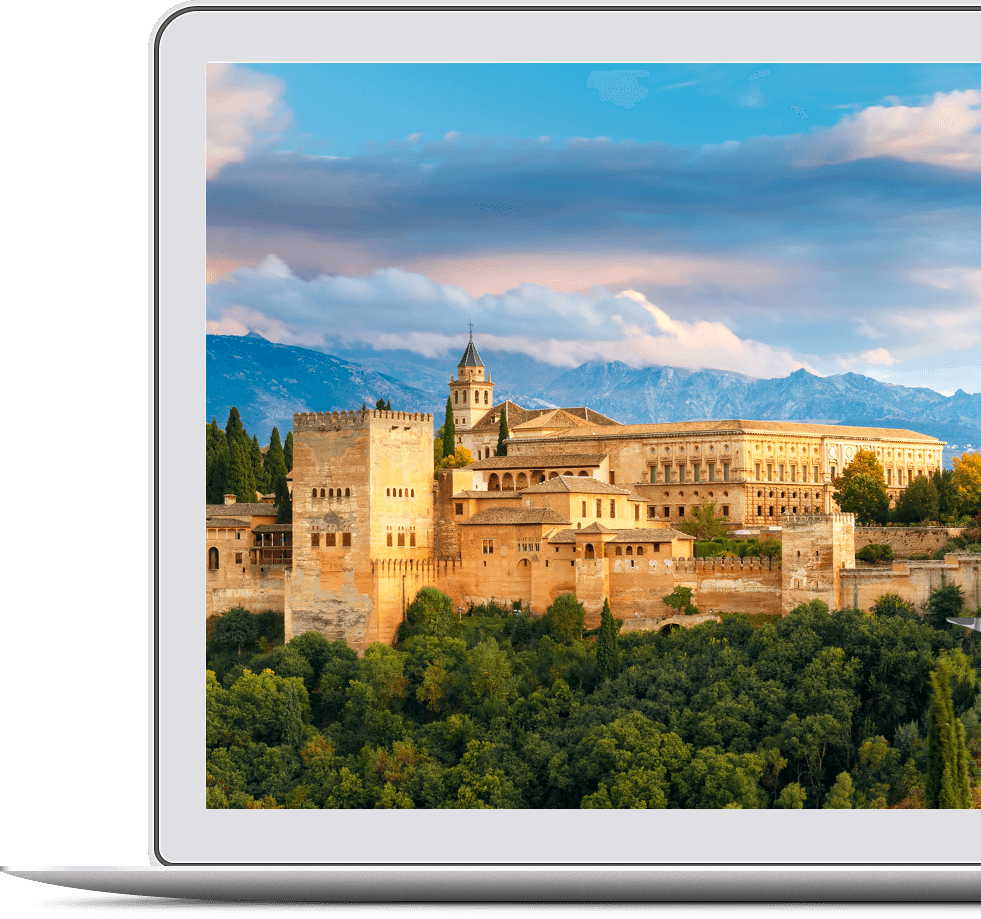Destination Management Andalusia
Andalusia is the southern region of Spain, and it’s one of the in total 17 autonomic communities Spain has (Andalucía being the second largest in the country). This region is limited on the north by the region of Estremadura and the region of Castilla La Mancha. On the east, you will find the region of Murcia, Portugal on the west and Gibraltar with the Mediterranean Sea on the south. Andalusia is the 2nd biggest region of Spain with the highest population (8 millions inhabitants over more than 87.500 km2). Andalusia is divided into 8 provinces: Almería, Cadiz, Cordoba, Granade, Huelva, Jaén, Málaga and Seville.
This is in Andalusia that all the clichés about Spain come true: bullfights, tapas, flamenco, sweet wines, horse breeding, patios full of flowers, mixture of architectural and cultural point of view (Phoenicians, Carthaginian, Greeks, Romans, Muslims, Jews and Catholics have lived in Andalusia and left their remains and imprint in a way or another). This is also in Andalusia that you will be able to discover the little white villages perched upon hills.


Seville. Heralded as Spain’s most cheery city, the beautiful streets of Sevilla burst with personality, joy and laid-back bustle
The city of Granada that spreads out below the exuberant hill-top La Alhambra boasts a mixture of cultures: the Islamic quarters of the Moors, the massive late-Gothic cathedral commissioned by the Catholic monarchs Fernando and Isabel, the still-used cave homes of Granada’s traditional gypsy population in the Sacromonte neighborhood, and more.
DO YOU NEED MORE?

Andalusia has been occupied by the Moors from 711 until 1492, which explains why this culture and their architecture and language influenced so deeply the Andalusia we know nowadays. The architectural style most representative of Andalusia is Mudejar style (a mixture of Arabic influences under the Catholic ruled empire). Many words of Spanish come from the Arab (all the name beginning by “al” have Arabic influence – an example is the Alhambra or Alcazar, meaning “fortress” in Arabic). These influences are mostly noticeable in Granada, the last city to have been taken back by the Catholics in the 15th century and last bastion of the Moorish kingdom. After the re-conquest, Andalusia also took an important part in the discovery of America. Indeed, this is from Seville, Cadiz and Huelva that all the boats going to the Americas have been launched, especially the boats of Christopher Columbus (buried in the Cathedral of Seville after resting in the convent close to Huelva in the last years of his life). Seville was the epicentre of Europe during the 16th and 17th centuries due to the fact that all the boats coming back from the New World had the obligation to stop in Seville to unload their precious products. Until 1950, Andalusia hardly changed respect to the way it was described in the middle of the 19th century by the English writer Richard Ford: “a piece of land put protected in a bottle for the antiquaries”, almost feudal, with the particularity of a strong and rigid social class. Nowadays, Andalusia is the first region of the world for the production of olive oil. Other products such as the fruits and vegetables (the strawberries from Huelva or the oranges from Seville are among the most representative), the excellent pork and Iberian hams and sausages, cheeses and wines are also very popular and world-widely famous products of Andalusia.
But Andalusia is not just agricultural anymore; several high speed ways have been constructed (especially for the 1992 Universal Exhibition taking place in Seville), now ultra modern buildings are competing with ancestral monuments like the Alhambra of Granada, the Mezquita of Cordoba or the Cathedral of Seville. Tourism and service sectors are also highly important in Andalusia and we can also be proud of being the location where the new Airbus was built and designed by local engineers. And although allying the old and the modern, Andalusian people have been able to keep their traditions, their love for the folklore, celebration and gastronomy, and still offering to the tourist their smile, hospitality and generosity.
Do you want to plan your event in Andalusia?
Purpose: Respond, where appropriate, to the request made.
Legitimation: Consent of the interested party.
Storage period: The data will be kept only for the time and purpose, for which they were collected and if there is no pending obligation of the interested party.
Final recipients: No data will be transferred to third parties, except for legal obligations.
Rights: To access, rectify or delete the data, request their portability, object to their treatment and request a restriction or limitation of it. You may exercise the above rights, by sending your request to the above address.
Claim: You can submit a claim, addressed to the AGPD, through the website of the Authority (https://sedeagpd.gob.es/sede-electronica-web) or by non-electronic means.
